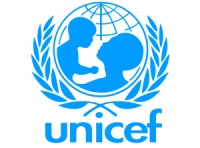
By JIM DWYER Published: April 24, 2012
CLICK HERE to read the article at NYTimes.com
Last year, New York City health workers gave out 37.2 million condoms. That works out to an average of 70 condoms every minute of the year. The city got into mass-scale condom distribution to help prevent the spread of debilitating and deadly diseases.
On the other hand, the condoms are also used to mark people for arrest on prostitution charges.
Here, for example, are affidavits filed in criminal court by two police officers in Brooklyn. They are part of the routine paperwork assembled in prostitution arrests. The first officer wrote that he “recovered from the defendant’s person currency in the following denominations: $1.25. Sexual paraphernalia, namely: One condom.”
The other wrote that he had found “condoms in the quantity of seventeen.”
One arm of the government is giving people condoms. Another arm is confiscating them from the very people who are most vulnerable to catching bugs and passing them along. How, precisely, does this make sense?
Beginning at least three years ago, the city’s Department of Health and Mental Hygiene tried to figure that out. Working with the Sex Workers Project of the Urban Justice Center, the city began collecting information on the confiscation of condoms from people in the commercial sex trade, and on whether the practice discouraged their use.
Audacia Ray, a former sex worker, said police officers often seized condoms, not for arrests, but to roust street prostitutes. “They need to make up their mind, whether the health department wants condoms to be used to protect people, or the Police Department wants to use it to arrest,” Ms. Ray said on Tuesday. “I know that prostitution is illegal and the district attorney does not want to make it any easier for people to do it, but it’s really problematic for public health. At times the condoms are being destroyed in front of people.”
Ms. Ray, who founded the Red Umbrella Project to support people in commercial sex work, said that she regularly stocked up on condoms at a clinic in the Chelsea section of Manhattan.
A year ago, the health department supported state legislation to ban the use of condoms as evidence of prostitution, and to “reduce all legislative barriers to condom use.” It planned to do mini-training sessions at police roll calls on the importance of condoms in preventing the spread of H.I.V.
Then things changed.
The city refused to release its study of sex workers and condom confiscation, written for Dr. Thomas A. Farley, the health commissioner, by Paul Kobrak, the director of risk reduction for the city’s AIDS and H.I.V. prevention bureau, said Sienna Baskin, the co-director of the Sex Workers Project. “They worked with us, and wouldn’t release it,” Ms. Baskin said.
“The report was an internal document,” Chanel Caraway, a spokeswoman for Commissioner Farley, said.Why wasn’t it made public?
Eventually, under the Freedom of Information Law, the city released a version of the report — labeled a draft more than a year after it was completed. Many pages were blacked out. Of the 63 people interviewed, 36 had condoms confiscated from them; 18 said they never carried them because of worries about the police.
“A sizable minority said that condom policing had at some point discouraged them from possessing safer sex materials,” the report stated. A follow-up study by the Sex Workers Project reached similar findings.
DESPITE the clear language of its own report, the city’s health department reversed its position on changing the law.
“After the commissioner reviewed the study, which found that the current law has not resulted in sex workers consistently failing to carry condoms because of fear of arrest, he decided not to support the legislation,” Ms. Caraway said. “We have seen no evidence that the current law undermines the public health aims of condom distribution.”
About 2,000 people a year are arrested on prostitution charges in New York, and the vast majority quickly plead guilty. On one of the rare occasions when a case went to trial, a judge scoffed at the presentation of a condom as evidence.
“I find no probative value at all in finding a condom,” said the judge, Richard M. Weinberg of Manhattan Criminal Court. “In the age of AIDS and H.I.V., if people are sexually active at a certain age, and they are not walking around with condoms, they are fools. I don’t need anything else on condoms.”








 On March 6, 2012, at the AAHIVM Membership reception at the CROI conference in Seattle, WA, the CARE Center’s Dr. Raphael Landovitz was presented with an AAHIVM/Institute for Technology in Health Care (ITHC) HIV Practice award for his creative use of social media to reach young men-who-have-sex-with-men (YMSM), which included a $10,000 grant.
On March 6, 2012, at the AAHIVM Membership reception at the CROI conference in Seattle, WA, the CARE Center’s Dr. Raphael Landovitz was presented with an AAHIVM/Institute for Technology in Health Care (ITHC) HIV Practice award for his creative use of social media to reach young men-who-have-sex-with-men (YMSM), which included a $10,000 grant.